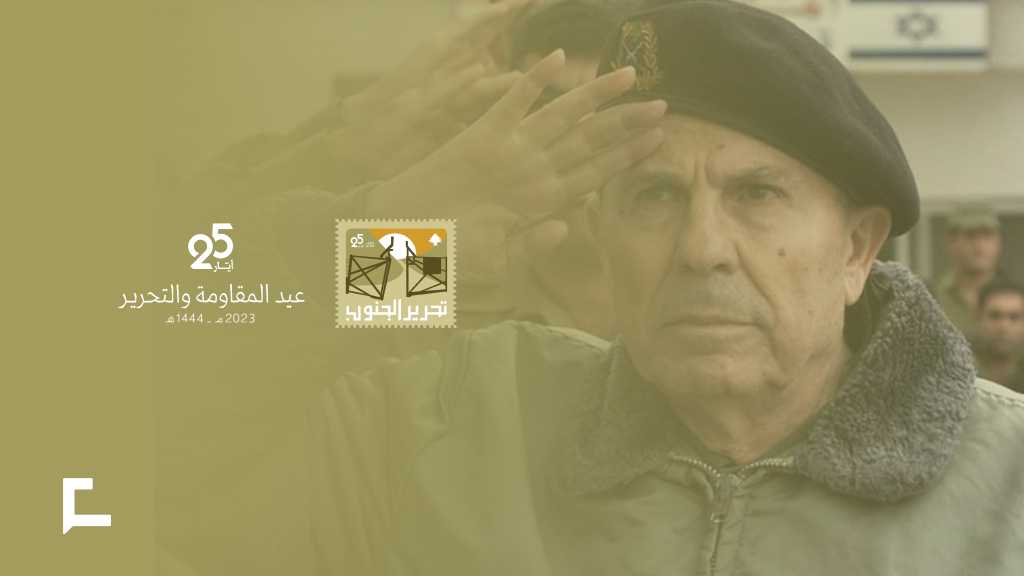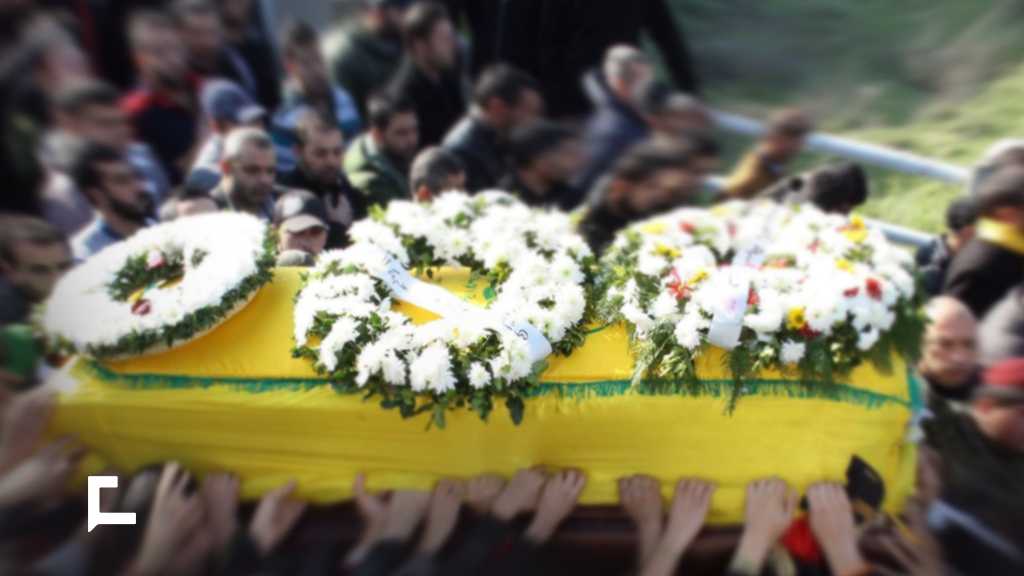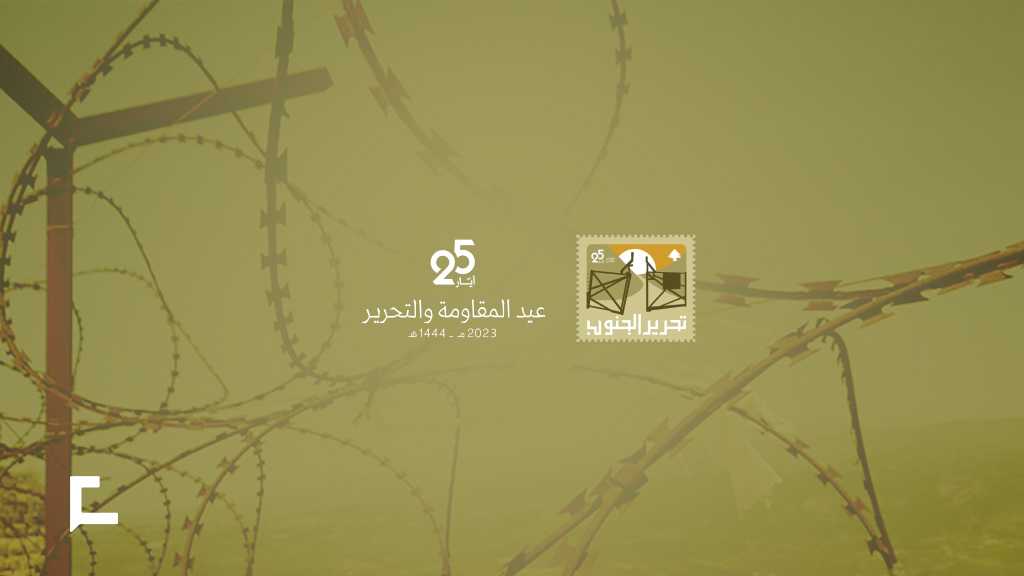
Current Stage of the Resistance: Raiding Offensive Function of Strategic Defense
author: By Ali Fayyad
source: As-Safir Newspaper 13/03/2004
summary: The forced "Israeli" withdrawal from South Lebanon in May 2000 may have provoked a strategic change in the course of political and security developments, but it was insufficient in halting the South from continuing to be a relatively stable front line subject to deterioration at any time. In fact the "Israeli" side left several practical engagement elements of which have direct escalatory results that could worsen while others take the form of inherent elements which could possibly protrude depending on the deterioration of the political and security situations take in the region. These elements are the ongoing "Israeli" occupation of the Lebanese Shabaa Farms, holding on to Lebanese captives behind "Israeli" bars, not handing over the hundreds of maps of the landmines they had planted in Lebanon to the Unifil (United Nations Interim Forces in Lebanon), planting bombs in the south and Beirut killing Lebanese activists, and violating the Lebanese sovereignty over and over by land, air, and sea. Later on, the "Israelis" made the already bad situation worse by adding one more element; threatening to shell a project that would provide Lebanese villages with water from the Wazzani River which flows from Lebanese soil and pours into occupied Palestine, bearing in mind that the project doesn't use up all the Lebanese portion which is declared in both private and international treaties.
At a first glance, it might seem that the German-mediated swap of corpses and detainees and turning over the maps of the landmines should diminish the elements of conflict; nevertheless, the continuity of the other more intricate factors imposes little change in the current strategic situation, a situation based on a main pedestal which the developments shed more light on; furthermore, clouds made way to reveal evidence for how much more associated it is to the geopolitics of the south than to regional and international issues bearing in mind the differing influences of the latter. The Lebanese south seems to be confined to a constant state where the "Israeli" occupation and threat propagate forming a crescent, the matter which renders the Resistance a constant fact in its geopolitics instead of rendering it a mere transitory reaction at a certain political phase.
It would be impossible to comprehend the continuity of the substantive foundation of the Resistance far from this approach albeit three major transformations occurred in the local, regional, and international facts: The "Israeli" withdrawal from the South in May 2000, 9/11 events and the declaration of the war on terror, and the American invasion of Iraq in the course of restructuring the Middle East map. Thereafter, most onlookers and politicians anticipated or presumed that all these alterations would cause the atmosphere in which the Resistance thrives to shrink or that its role would dwarf. On the contrary, nothing of the sort happened; nonetheless, the developments confirmed that its role is ever-growing. The afro-mentioned "Israeli" occupation and threat form the objective basis which in turn requires the existence of a resistance and justifies its role. The occupation and threat also seem not to be losing ground soon especially that the "Israeli" threat in its different forms is a structural fact in "Israeli" politics which has been present both politically and practically over the past few decades. Therefore, there is no reason to assume that changes may occur in the near future on that level.
To confront these two factors the Resistance adopts a complex strategy based on two complementary statues:
1- The particular status of the Shabaa Farms characterized by being occupied Lebanese territory whereby the Resistance adopts its right to take the initiative employing assailing strategic operations and transforming the occupied zone into a potential battlefield apt to possible deterioration at any moment. This implies that this battlefield is an "Israeli" Achilles` heel militarily speaking whilst it reinforces the Lebanese right to resistance so as to free its land from a political angle, a matter which is demonstrated by the time gaps between one operation and another and which, in addition, reflects a restrain from being drawn into open confrontations yet leaving the option open to defensive reaction which may well set them in motion. For the exclusive state of affairs in the Shabaa Farms is governed by a rigid equation where the right to take the initiative in the resistance operations in view of the fact that it is occupied territory on an irregular basis is determined by the resistance based on political and military circumstances, the enemy's situation, and the Lebanese national interests.
2- The particular situation of the liberated territory parallel to the blue line, a situation principally associated with the "Israeli" activities (threats, violations, and attacks) whereby the strategy of the resistance is formulated on being entitled to react to whatever the "Israeli" side commits in the right of the Lebanese sovereignty and national security, founded on changing equations specified by the resistance in accordance with the type and extent of the "Israeli" violation and relying on a wide variety of progressive options, bearing in mind that the Lebanese national security , like any notion of national security, is related to the protection of persons, civil and military institutions, the economy, social security, the greater national interests, and the political and military alliances which support national security. From this angle, the relationship is clarified between the attacks on Syrian military posts in Lebanon or Syria and the Lebanese national security due to the fact that Lebanon and Syria are bound to alliances and conventions between the two and fall under one strategic frame where an attack on any one of them leaves its conclusive impacts on the other yet forming a threat to the latter simultaneously.
It is clear from the resistance's performance anchored in the past two status that it is a defensive-generated performance based on not practically trespassing the international borders and holding on tight to the right to liberate the Lebanese territory in the occupied Shabaa Farms. Therefore, the abatement of the confrontation between the resistance and the "Israelis" will mainly remain in the Farms that is attributed as the main base for conflicts by the resistance which is in combat with an occupation army on occupied land, so long as the occupying army restricts itself to the rules of the conflict. In case the latter attacks or deteriorates the situation in any manner outside the Shabaa Farms, the resistance will answer- in conformity with what their leaders declared and battlefield occurrences disclosed over the past few years, in accordance with the extent, type, and form of attack.
Truth be said, the "Israeli" side- based on recurring proclamations- presumes that the Islamic Resistance is in possession of a mass military structure close to the borders formed from surveillance points and military posts and bases - some visible, others entirely camouflaged. Most dangerous of all, according to the "Israeli", is the establishment of missile platforms which are weighed heavily in the balance by the "Israeli" side in case of a potential confrontation or war schemed against Lebanon or Syria. Hence, this illustrates an additional strategic depth of the Resistance which places it among the major elements of the regional military balance in addition to the other factors related to the "Israeli" occupation and threat in South Lebanon. So far what has been accomplished exhibits the success of the resistance in maintaining the Shabaa Farms file open, protecting the Lebanese borders from violation, forming a sturdy shield protecting the utilization of Lebanese water, liberating the Lebanese captives from "Israeli" prisons, and forcing the "Israelis" to turn over the landmine maps for the areas it withdrew from.
In light of that matter, the strategic course which combines the rules of confrontation in south Lebanon is elucidated; the allocation of the Resistance's military performance into two folders- one based on the right to take the initiative in the occupied zone; the other on the right to react in the liberated zone- reveals the prudent feature of Hezbollah's strategy in approaching an exceptionally dangerous and remarkably complicated issue. This lucid feature has fettered the "Israel's" capacity to take advantage of the current circumstances or alter them to be employed to his benefit in spite of the intense unrest in the Middle East. On the other hand, it provided the resistance with legal protection aside to the latter's dual legitimacy derived from the resistance's role in liberation and defense and from the Lebanese Government's guardianship of the resistance.
And if we are to search for a term to designate the Islamic Resistance's strategy in the Lebanese South in the phase it has settled to over the three years and a half following the "Israeli" withdrawal in May 2000, one capable of expressing the score of the precepts of the confrontation accumulating its progress in the course of those years, the ultimate term would be: strategic defense.
What we mean by strategic defense here is that the defense acquires all the advantages of attacking; hence it is carried out in a defensive logic and employing defensive policies, for the Resistance's combat against occupying forces on occupied land is a defensive operation while confronting attacks, violation of sovereignty, trespassing of the borders or threats to national security all fall within a defensive frame. Yet when a defensive operation acquires strategic characteristics, it indicates an advanced point in the conflict bearing all the capacity and requirements needed to bring the conflict to the peak. Weather the conflict reaches the peak or weather it remains at its present state, the common function is the capacity to limit the opponent's movements, spoil his plots, and, maybe, even defeat him. For military history has numerous witnesses of how strategic defense brought about the opponent's exhaust, decline, withdrawal, and, finally, defeat.
The strategic scene is further clarified upon realizing the significance of the paradox that has prevented the "Israeli" side till this moment from riding the American-driven wave in the Middle East after 9/11, the American invasion of Afghanistan and Iraq, and the declaration of the war on the so-called "terror front", in spite of the constant "Israeli" endeavor to mix the course of confrontation with his traditional enemies with the course of the internationally-sponsored open war on terror. The reactions to this intermixing became apparent mainly in Palestine, and generally on the regional political level. However it hasn't been translated on the military level in other war zones for numerous recognized causes, most significant of which is the American agenda itself. This shouldn't conceal a chief prospective component at the core of military complications in the Lebanese South and on the regional level- what we call strategic defense sustaining a main philosophy which implies that the "Israeli" becomes well-aware of the fact that any war or attack will bear an expensive price tag, one he might not be able to afford.
For strategic defense is further elucidated as a theory for managing the recognized intricacy of the current period in the absence of practical opportunities for other strategies- the offensive strategy or balance strategy in its traditional sense which prevailed in the 80's. On the Middle Eastern map of unrest lie two chief sites from which waves of violence burst forth onto the region- Iraq and Palestine- whereby the American and "Israeli" face two substantial self-inflicted dilemmas, their policies suffering failure after failure. Meanwhile, the "Israeli" policy resembles the American policy dramatically in the endeavor to export the failure away from its origin thus enlarging the compass of incursion and generalizing the responsibility; the American aspires a Greater Middle East to rescue him from the Iraqi quicksands and works on entangling other allies based on making Iraq a local element in broader crisis with deeper background and dimensions. Failing to come to terms with his helplessness in putting an end to the Palestinian resistance, the "Israeli" persists in directing the responsibility outward pointing to Syria to which he makes recurring threats.
On this basis, the "Israeli" listed his cautioning air raid on Ain el-Sahib Post in Syria several months ago as a reaction to the aggravation of operations in Palestine. The Syrian reaction which was restricted to political steps taken at the time was coupled with warnings from both Syria and Hezbollah to "Israel" that if such actions are to be repeated, they will be answered militarily. Even though the situation in Palestine did deteriorate afterward, "Israel" appeared more cautious in thinking of repeating the Ainel Sahib experience.
As a matter of fact, the Resistance's strategic defense policy seems to form a barrier indirectly restraining the "Israeli" ventures in the region from triggering overwhelming military chaos. What`s more, it seems that the strategic defense contributes to the indirect results of reinforcing regional stability which would appear to be, if the resistance in the south were absent, in an acute state of disorder of the existing political equilibrium, which would consequently open the doors wide for "Israeli" military aggravation.
These factors form an intertwining mass of influences compelling the "Israeli" to face the Palestinian reality internally...which appears to be the original conclusive scene in the course of the developments. This poses a frequently asked stimulating question regarding the relationship between the resistance in South Lebanon and the internal Palestinian status.
As a matter of fact, the Resistance openly reveals its support for the struggle of the Palestinian people and invites all Arabs to support them practically through sufficient means.
Nonetheless, and in a practical sense, the image exposes the distribution of confronting and preoccupying functions that are complementing, as the whole region endows reciprocating fields resembling connected vessels. Consequently, what happens in the Lebanese South cannot be isolated from the Palestinian interior state; hence, they could be coupled in a single strategic context. In the meantime, we mustn't miss out on the utter significance of the "Israeli" politics, the non-faced policy, or, in the best, the escape policy, for throughout the history of ""Israel"", never before has politics reached such a state of turmoil and absence of strategic options. Upon the failure of the strategy of compromise and the sterility of large-scale war policy in the absence of political horizons and the capacity to transform military function into political results, and while the Intifada is carried on in spite of attempting all the alternatives tailored to abort it, the "Israeli" has found himself forced to adopt the barrier policy, a policy that cannot be understood in spite of the bitter pain it inflicts on the Palestinians, other than that it is a policy of retreat and decline in confrontation with the Palestinian truth.

Memoirs of a Disappointed Collaborator
11 months ago

